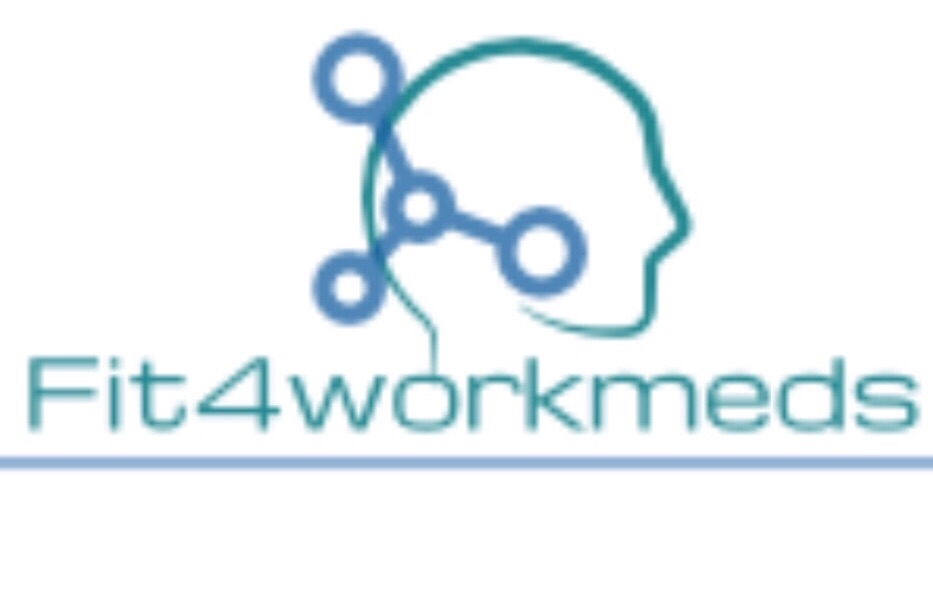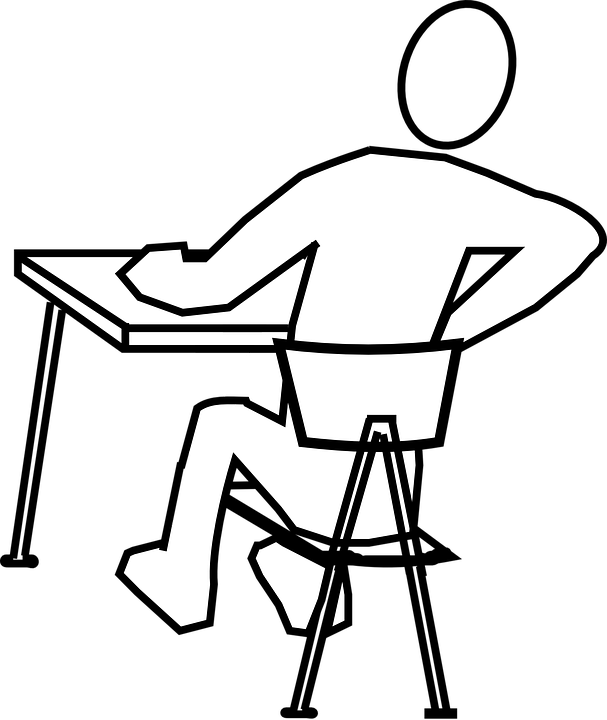Back Pain At Work
Back pain is an ache, pain, tension, or disorder that affects the muscles or bones of the back from the base of the neck to the hips. It can be caused by damage to the muscles or the bones of the spine and ribs or to the discs between the vertebrae.
What causes back pain?
• heavy manual labour
• handling tasks in heavy industry or in awkward places like delivery work
• repetitive tasks such as manual packing of goods
• sitting at a workstation for a long period of time such as when working with computers, especially if the workstation is not correctly arranged or adjusted to fit the person using it
• driving long distances or over rough ground particularly if the seat is not properly adjusted or adequately sprung
• stooping, bending over, crouching or carrying out stretching, twisting and reaching tasks
• pushing, pulling or dragging loads that require excessive force
• working beyond normal abilities and limits or when physically overtired
• prolonged periods in one position.
What Are The Symptoms?
Pain, tenderness or stiffness of the backbone, and an inability to straighten or bend your back properly. In extreme cases sufferers are unable to move due to the pain and numbness or paralysis may occur. For muscular problems, there may be tenderness, aches and pains, stiffness, weakness, tingling, numbness, cramp and swelling to the muscles of the torso, which may cause some breathing issues too, eg pain on taking deep breaths.
Back pain is not usually due to any serious damage or disease. The pain usually improves within days or a few weeks, at least enough to let you get on with your life. Only a few people have back pain that is caused by a more serious issue such as a slipped disc or a trapped nerve and even these usually get better by themselves.
If you have severe pain which gets worse over several weeks, or if you are unwell with back pain, you should see your doctor. If you do have back pain and suddenly notice any of these symptoms, which are rare, you should see a doctor straight away:
• difficulty passing or controlling urine
• numbness around your back passage or genitals
• numbness, pins and needles, or weakness in both legs
• unsteadiness on your feet
What Advice Is Available For Back Pain?
The general advice to those suffering from back pain is to stay active and try simple pain relief. However, if the pain persists or causes extreme discomfort then you should contact your GP for medical advice.
Because back pain has many causes, a precise diagnosis is not always possible and this makes management of the pain all the more important. There are options that your medical advisers may suggest such as visiting a physiotherapist, chiropractor or osteopath.
What should I do if I have been suffering from continual back pain but my employer has not done anything to help me?
The action that should be taken will depend on individual circumstances, but it is important to understand that not all MSDs - including back pain - can be prevented, so early reporting of symptoms, proper treatment and suitable rehabilitation are essential.
If you belong to a trade union, you should speak to a safety representative who will relay your issues to your employer. Alternatively, you can ask your GP to provide a 'fit' note that clarifies the problem you are experiencing, and therefore what aspects of your job may be causing you problems. If your organisation has an occupational health service, you could also ask for a referral.
What Law Applies To Back Pain?
Employers have legal duties under:
• the Health and Safety at Work etc Act 1974
• the Management of Health and Safety at Work Regulations 1999
• Health and Safety (Display Screen Equipment) Regulations 1992.
These duties include ensuring the health, safety and wellbeing of employees at work, and assessing and reducing potential risks to their health, safety and wellbeing. Employers have a duty to do something if there is a problem which is causing or aggravating existing symptoms.
Managing Back Pain
Back pain will usually improve within a few weeks or months. There are several things you can try to help reduce your pain in the meantime.
There are also some specialist treatments that may be recommended if it's thought simple measures aren't likely to be effective on their own.
See your GP or a physiotherapist if your pain isn't improving despite trying simple treatments.
Treatments You Can Try Yourself
Stay active:
One of the most important things you can do is to keep moving and continue with your normal activities as much as possible.
It used to be thought that bed rest would help you recover from a bad back, but it's now known that people who remain active are likely to recover more quickly.
This may be difficult at first, but don't be discouraged – your pain will start to improve eventually. Consider taking painkillers if the pain is stopping you from carrying on as normal.
There's no need to wait until you're completely pain-free before returning to work. Going back to work will help you return to a normal pattern of activity and may distract you from the pain.
Back exercises and stretches:
Simple back exercises and stretches can often help reduce back pain. These can be carried out at home as often as you need to.
Your GP may be able to provide information about back exercises if you're unsure what to try, or you may want to consider seeing a physiotherapist for advice. Read about how to find a physiotherapist.
Doing regular exercise alongside these stretches can also help keep your back strong and healthy. Activities such as walking, swimming, yoga and pilates are popular choices.
Painkillers:
Non-steroidal anti-inflammatory drug (NSAID) tablets, such as ibuprofen, can help relieve back pain. Many types are available to buy from pharmacies or supermarkets without a prescription.
But NSAIDs aren't suitable for everyone, so check the box or leaflet to see whether you can take the medicine first. Speak to a pharmacist if you're not sure.
If you can't take NSAIDs, alternative medicines such as codeine may help. This is a stronger painkiller that should ideally only be used for a few days, as it can cause addiction if used for longer.
Paracetamol on its own isn't recommended for back pain, but it may be used alongside stronger painkillers such as codeine.
Muscle relaxants may be prescribed by your GP if you have painful muscle spasms in your back.
Hot and cold packs:
Some people find that heat – for example, a hot bath or a hot water bottle placed on the affected area – helps ease the pain when back pain first starts.
Cold, such as an ice pack or a bag of frozen vegetables, placed on the painful area can also help in the short-term. However, don't put the ice directly on your skin, as it might cause a cold burn. Wrap an ice pack or bag of frozen vegetables in a cloth first.
Another option is to alternate between hot and cold using ice packs and a hot water bottle. Hot and cold compression packs can be bought at most pharmacies.
Relax and stay positive:
Trying to relax is a crucial part of easing the pain as muscle tension caused by worrying about your condition may make things worse.
Although it can be difficult, it helps if you stay optimistic and recognise that your pain should get better, as people who manage to stay positive despite their pain tend to recover quicker.
Specialist Treatments
Exercise classes:
Your GP may suggest attending an NHS group exercise programme if they think it might help reduce your pain.
These programmes involve classes led by a qualified instructor, where you're taught a mix of exercises to strengthen your muscles and improve your posture, as well as aerobic and stretching exercises.
Manual therapy:
Manual therapy is the name for a group of treatments where a therapist uses their hands to move, massage and apply careful force to the muscles, bones and joints in and around your spine.
It's usually carried out by chiropractors, osteopaths or physiotherapists, although chiropractic and osteopathy aren't widely available on the NHS.
Manual therapy can help reduce back pain, but it should only be used alongside other measures such as exercise.
There's also some evidence that a therapy called the Alexander technique may help with long-term back pain, although the National Institute for Health and Care Excellence (NICE) doesn't currently recommend this treatment specifically.
Psychological support:
Your GP may suggest psychological therapy, in addition to other treatments such as exercise and manual therapy.
Therapies such as cognitive behavioural therapy (CBT) can help you manage your back pain better by changing how you think about your condition.
While the pain in your back is very real, how you think and feel about your condition can make it worse.
If you've been in pain for a long time, a specialist treatment programme that involves a combination of group therapy, exercises, relaxation, and education about pain and the psychology of pain may be offered.
Surgery and procedures:
Surgery for back pain is usually only recommended if there's a specific medical reason for your pain, such as sciatica or a slipped (prolapsed) disc, and other treatments haven't helped.
But a procedure called radiofrequency denervation may sometimes be used if:
• you've had back pain for a long time
• your pain is moderate or severe
• your pain is thought to originate from the joints in your spine
This procedure involves inserting needles into the nerves that supply the affected joints. Radio waves are sent through the needles to heat the nerves, which stops them from sending pain signals.
You're awake while the treatment is carried out and a local anaesthetic is used to numb your back. You won't need to stay in hospital overnight.
As with all procedures, radiofrequency denervation carries a risk of complications, including bleeding, bruising, infection and accidental nerve damage. Discuss the risks with your surgeon before agreeing to treatment.

